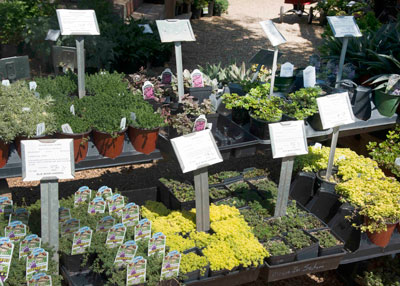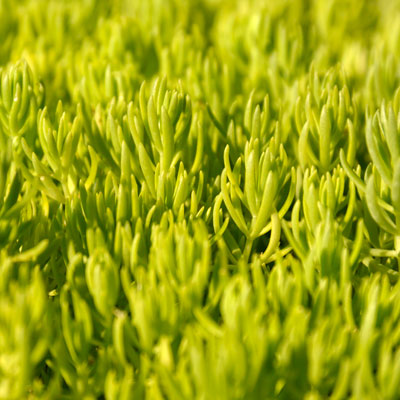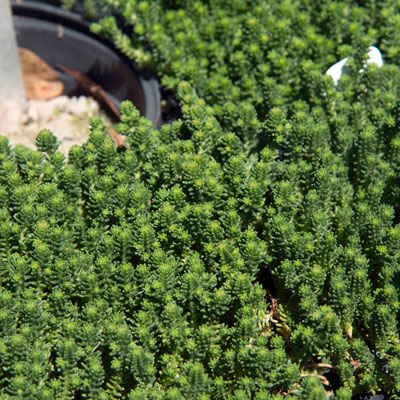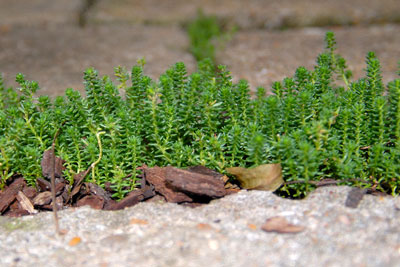Show-Stopping Sedums
I’ve been growing sedums since I was 12. Those were succulents I grew in my greenhouse, but I soon learned there are scores of other sedums available for use outdoors in Texas gardens.

Photo: Almost all independent retail garden centers (and even some of the national chain stores) offer sedums. (Photo from Blue Moon Gardens east of Edom, taken last week.)
Recent years have seen dozens of named hybrids brought into the nursery industry, with colors ranging from blood red, bright golden yellow and steel blue to all shades of green. Some grow 12 or 15 inches tall, but most are in the 3- to 5-inch range. A couple stay really short, including my all-time favorite.
Uses for sedums…
• Filler for patio pots. Plant them among taller plants to tie things together visually.
• Between stepping stones. Be sure you choose types that stay short and that won’t be hazards as you walk.
• Groundcovers. If you have small spaces to fill, many of these are good candidates.
• As potted succulents. This is where you can try some of the tropical types for even more variety.

Photo: A popular new hybrid sedum called ‘Lemon Coral’ is really showy in patio pots and small groundcover spaces. Give it shade in the afternoon during the summer.
What sedums need…
• Perfect drainage. The one common thread through all of these plants is their need for well-draining soils. They’re great on retaining walls and berms. They’re risky in damp, flat ground in the eastern half of the state.
• Morning sun with shade from the hottest of afternoon sun. (Some types are more tolerant of hot, reflective sun than others.)
• Moisture and nitrogen, both in somewhat modest amounts.
There are so many types of sedums available that I opted not to try describing them all. Experiment a little. Let your nursery professional advise you. Have fun with them.

Photo: Sedum sexangulare has proven its merits time and again in the Sperry home landscape.
My favorite sedum of all…
A friend drove me to Blue Moon Gardens in Edom last week. It was my first outing of any duration since vertigo hit me last June. It was wearing, but what a wonderful garden center. I’ve missed being there. It was nice to see my longtime friends Mary Wilhite and Sharon Smith.
I saw another old friend there: Sedum sexangulare. Fitting that they’d have it last week, because they had it 20 years ago on my first visit. I bought it then, and I’ve been growing it ever since. It tops out at 2 inches of height, and it’s great between steppingstones and in raised rock gardens as well. If you’re using it in walks, plant it just a tad deep so it will come to the top of the stones and not sprawl out over them. I rarely see this plant in other nurseries, but Blue Moon always seems to have it in stock. Well done, ladies!

Photo: Sedum sexangulare is planted deeply enough that it barely clears the tops of the stones.
